Lima's Two Faces - Colonial and Contemporary
![]()
Some observers have argued that Francisco Pizarro picked an unfortunate location for the colonial capital of Peru. They note that the climate is boring - never too hot and never too cold, rarely rainy but always misty and humid. Then there is the difficult topography - from the low alluvial plain surrounding the Rio Rimac to the elevated and erodable cliffs rising to the south with a narrow beach below, then changing to great dunes of shifting sand.
But the Spaniards wanted a seaside capital to be the centre for the export of the riches of their South American colonies to Spain. For this purpose, Lima was highly successful.
We decided to stay in a pleasant hotel on Jiron de la Union, the pedestrian shopping street that connected charming colonial Plaza Mayor....
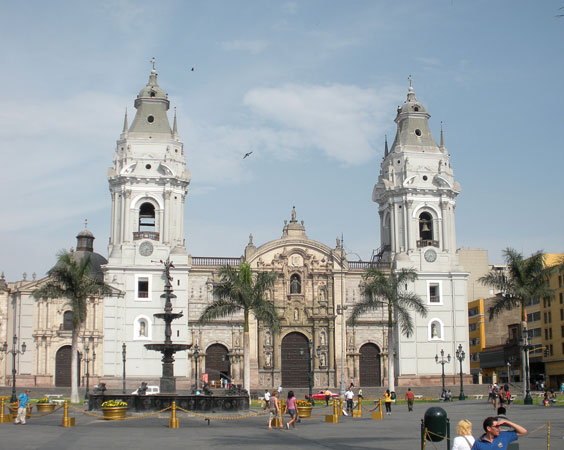
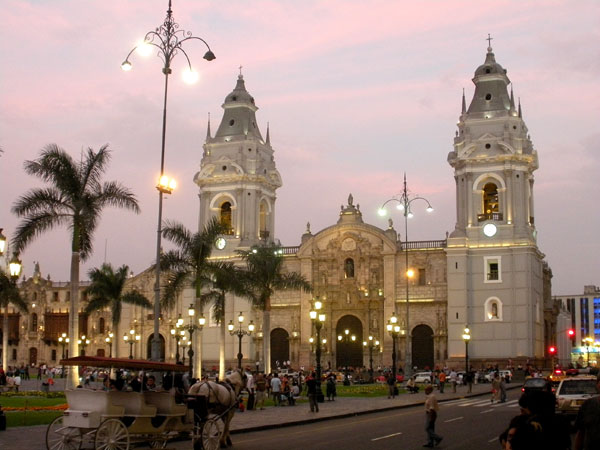
... with the more modern and stately Plaza San Martin.
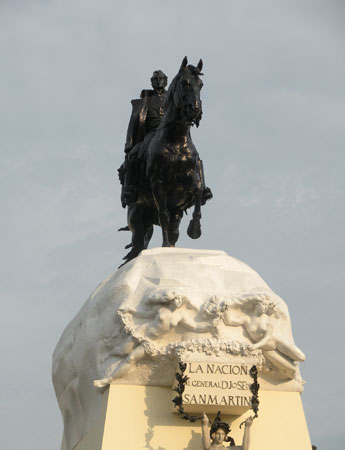
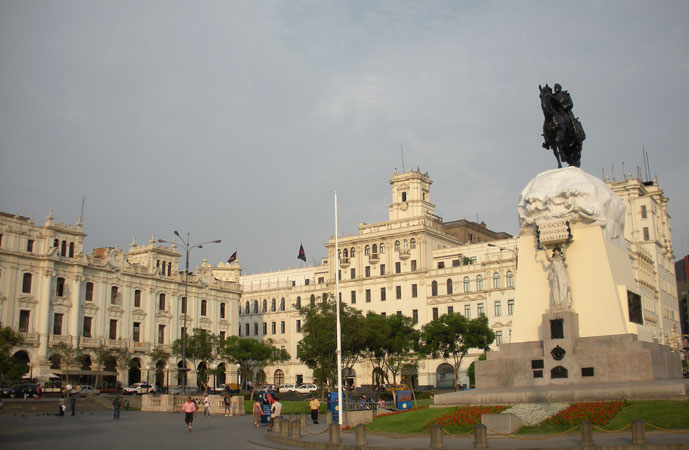
From our balcony, we could observe the great crowds of people strolling below in the street. We joined them to explore the grid of streets in the people scale centre, appreciating the feeling of friendly community, easily discovering cafes and restaurants, being welcomed as visitors with smiles and warm greetings by everyone we met.
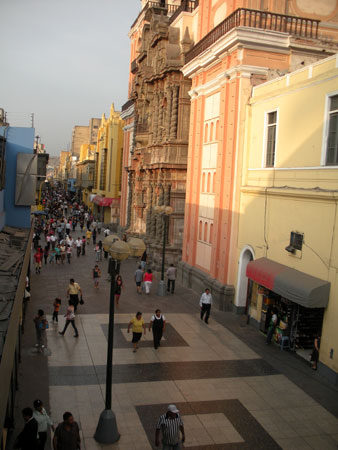
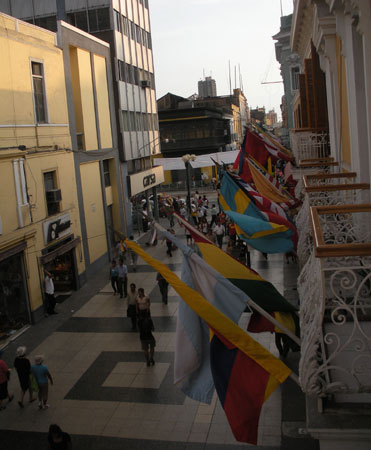
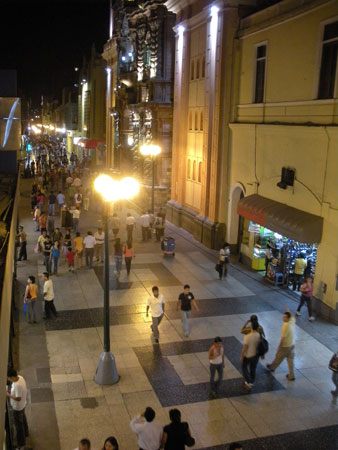
A bus tour provided a broader view of the city: the stadium under serious renovation; Via Expressa, the vehicle packed thoroughfare that cut from Centro to the southern suburbs;
... and the many colonial era buildings, freshly painted with their wooden balconies lovingly preserved.
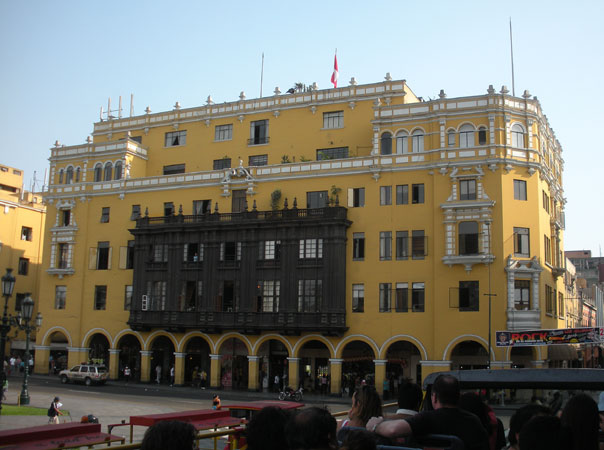
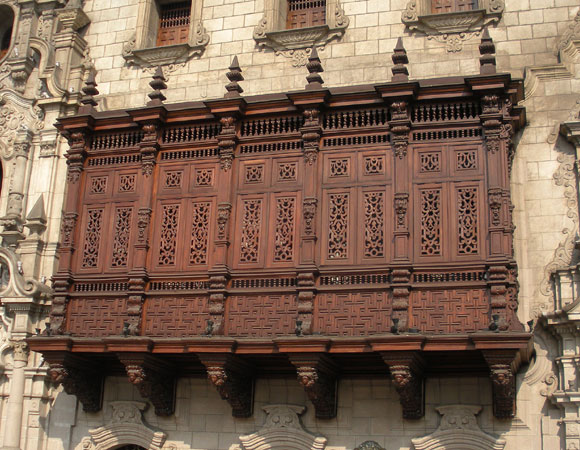
Parque de la Exposicion that provided a welcome expanse of lawns and great trees...
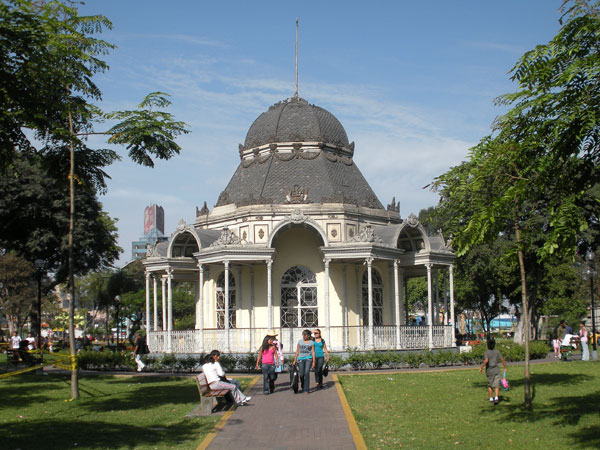
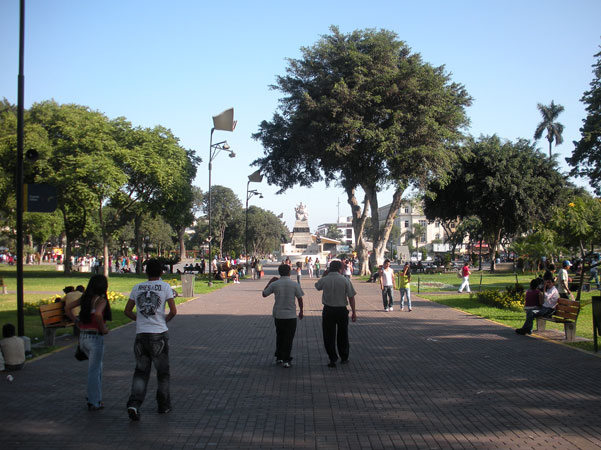
... while Parque de la Reserva, was an audacious collection of fountains set in a lovely green space;
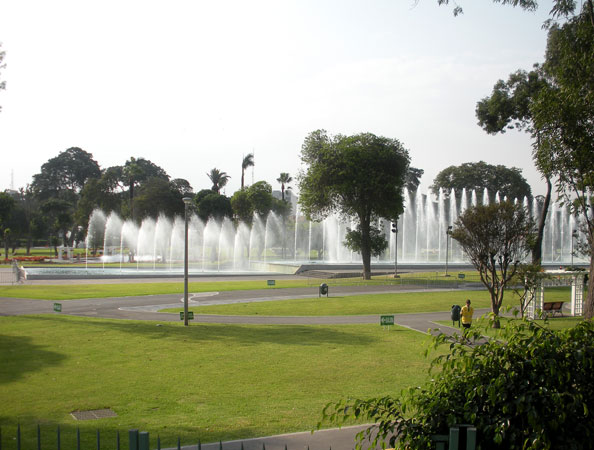
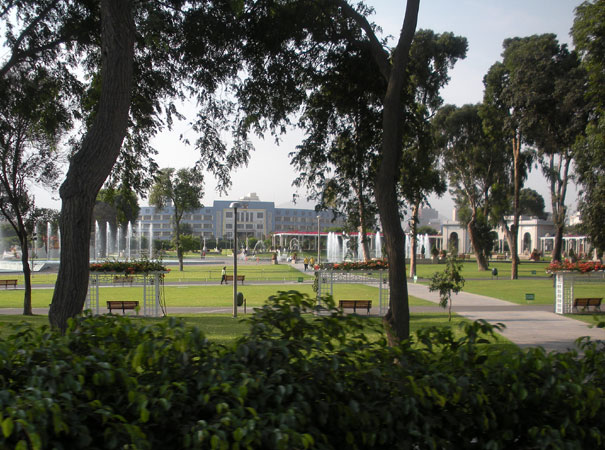
Overall, Lima Centro was a pleasant urban place.
With these initial impressions in mind, we departed Lima to visit some of the wonders of Peru - Nasca and its mysterious lines, Arequipa and Colca Canyon, Puno and Lake Titicaca's Uros Islands, and finally Cusco and Inca Citadel of Machu Picchu.
Returning to Lima, we chose to stay in Miraflores, a totally different face of Lima. Miraflores is perched at the top of the cliffs high above the Pacific Ocean to the south of Lima Centro. With its streets lined with cafés and shops offering expensive stuff, towered over by high rise offices, this is widely considered to be "where the action is" in Lima.
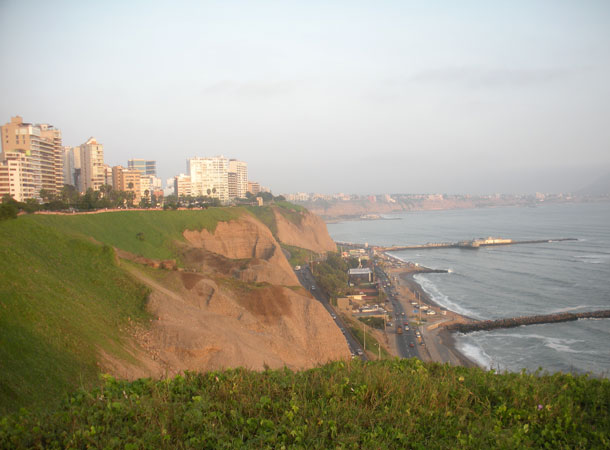
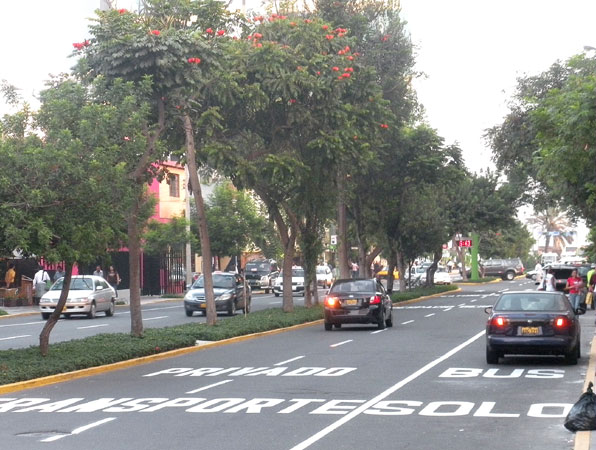
Miraflores offers visitors, expatriates and wealthy Limeños an almost European lifestyle. Yet, this lifestyle was only available for those who could afford it. Sure, it's connected to Lima Centro by Avenida Arequipa and also by the Via Expressa, but it felt worlds away from colonial Lima and even farther from Lima's outer suburbs where the poorer people live.
Parque Siete de Junio (Miraflores Park) provided the community's centre and a welcome green space. On week ends, people gathered to dance traditional dances.
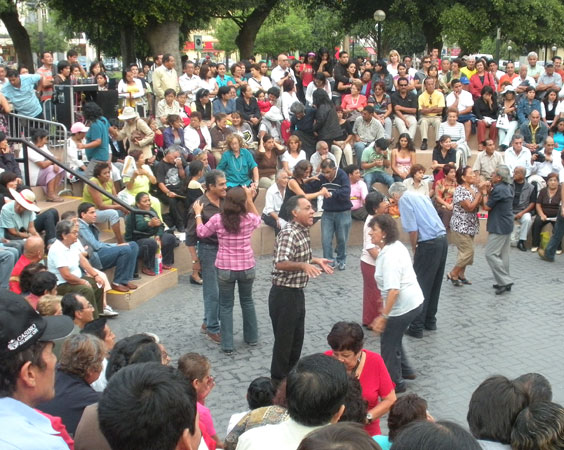
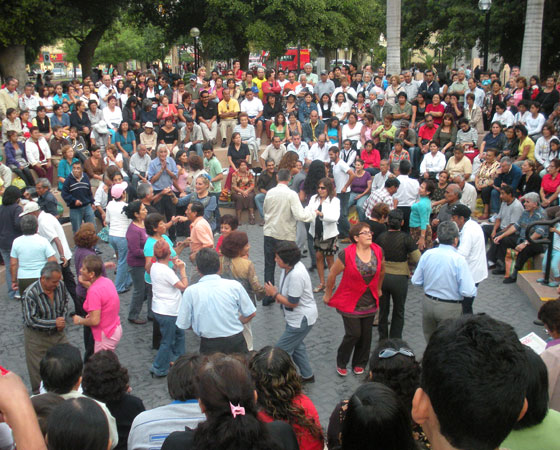
A short walk away, Larco Mar, a mall built on the edge of the cliff, offered more upscale shopping pleasures including familiar international brands, not much to our taste, however. We observed with some interest that the expensive restaurants and shops were rather empty while plenty of folks strolled around partaking of snacks and ice cream, and the wonderful ocean views.

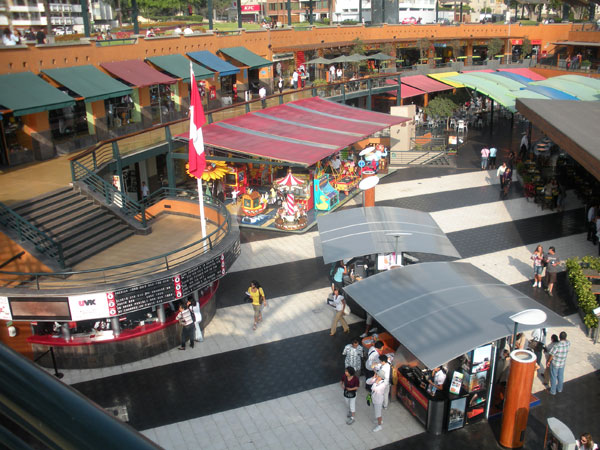
Nearby, the parque extending along the cliff top, offered grand ocean views, plenty of pleasant natural world connections, tennis courts, skating/walking/biking ways, and even places for lovers to gather!
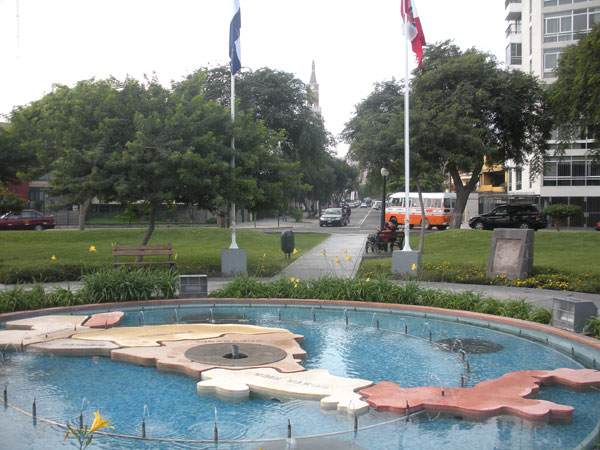
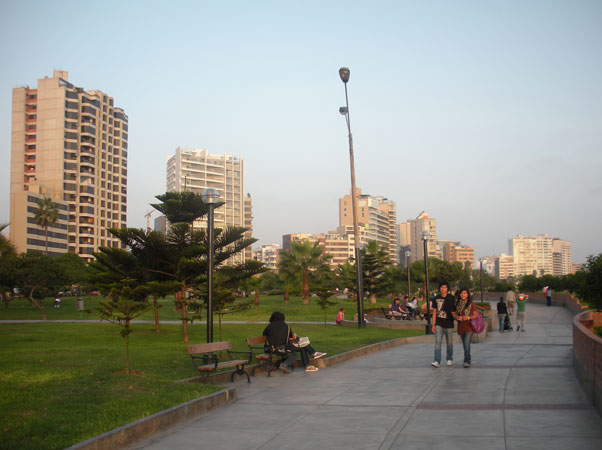
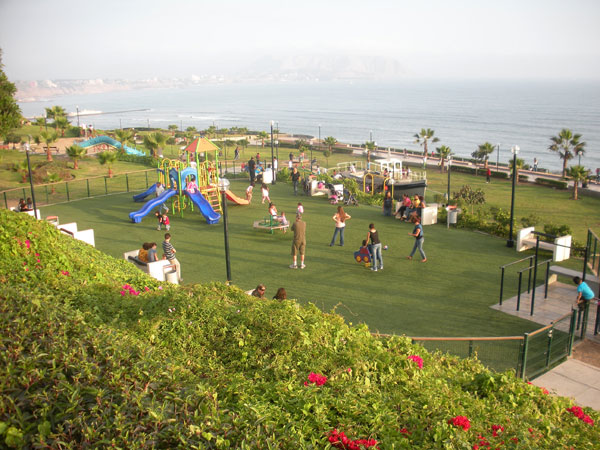
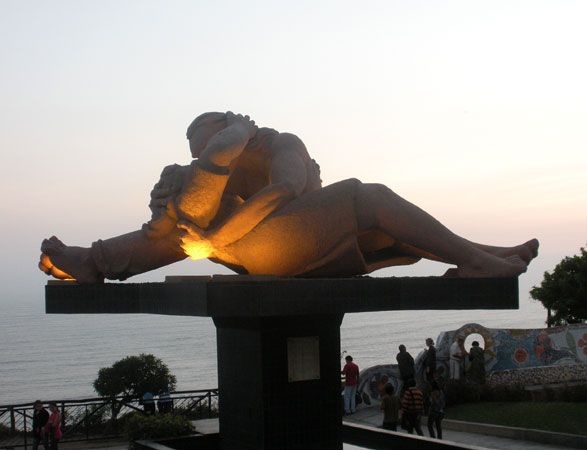
Highrise apartments overlooked the parque, offering more well-to-do residents great sea views.
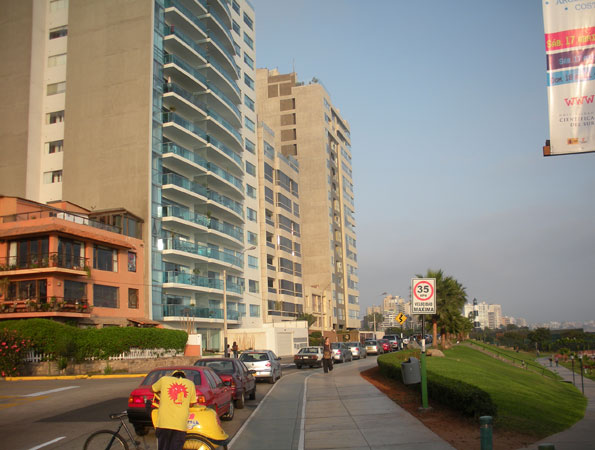
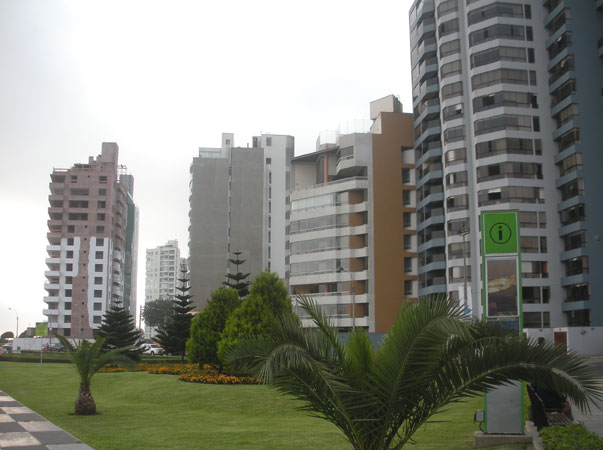
Nearby residential neighborhoods of Miraflores offered apartment living in apartment blocks of various heights - mostly from six to fifteen stories.
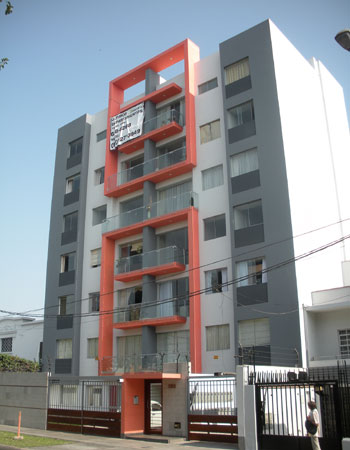
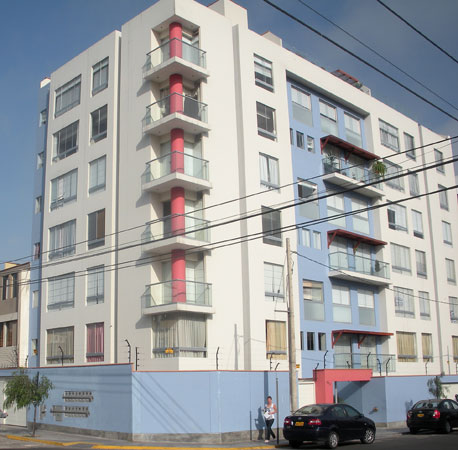
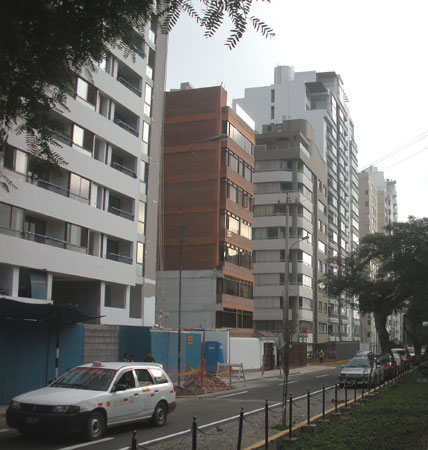
There were also lower rise courtyard apartments and even single family homes.
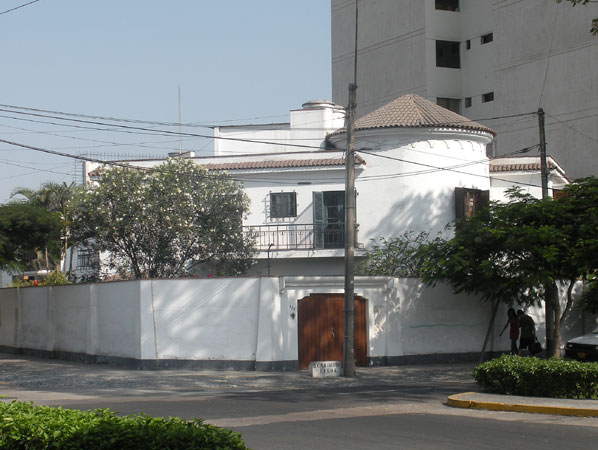
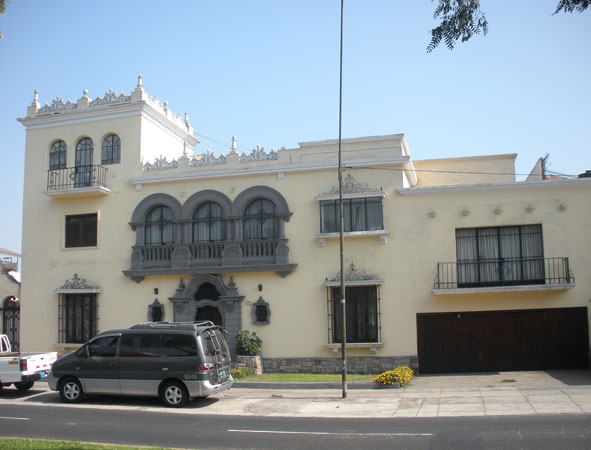
Reflecting on what we had seen in our two visits, it was clear that Lima was struggling to get its arms around the massive challenges posed by its swelling population, the pervasive poverty, and the demands for essential infrastructure characteristic of a modern capitol city, including a efficient public transport system.
And yet, there were hopeful signs that the city was making progress after the delays caused by the conflicts with the 'Shining Path' insurgency of the 1980s and early 1990s. The current transit system, presently limited to hordes of roaming taxis and roaring, unregulated combis (minibuses) ...,
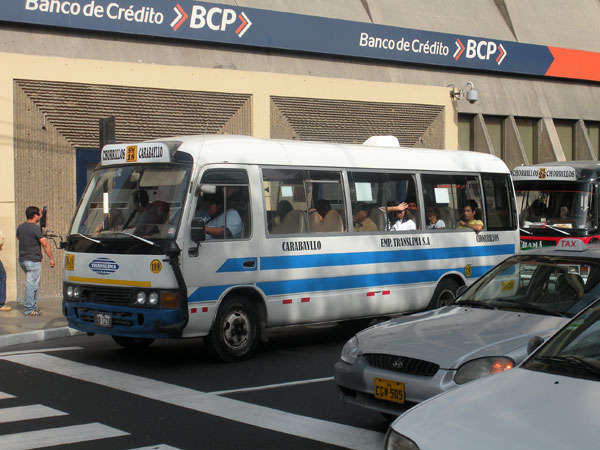
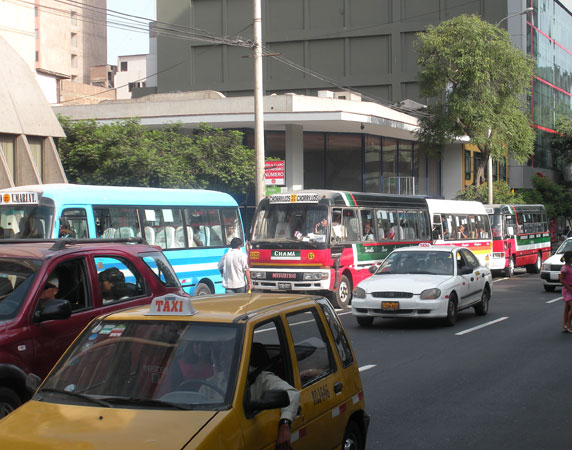
... will soon (May 2010) include the Metropolitano (www.metropolitano.com.pe), a 28 kilometer bus rapid transit (BRT) line traversing the city along a north-south corridor. With 35 stops, all served by feeder buses to deliver passengers to the BRT, the natural gas powered Metropolitano buses are expected to serve 700,000 passengers per day.
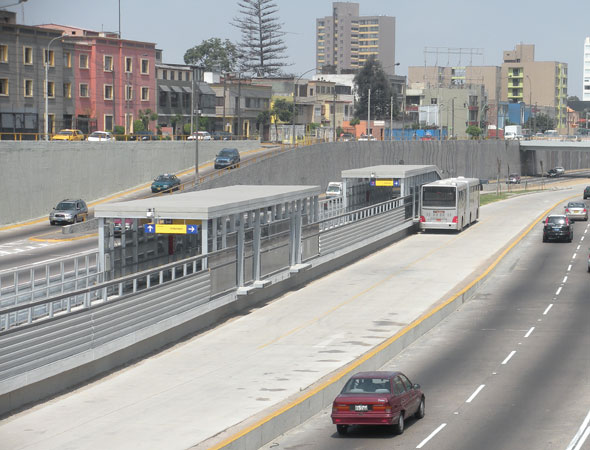
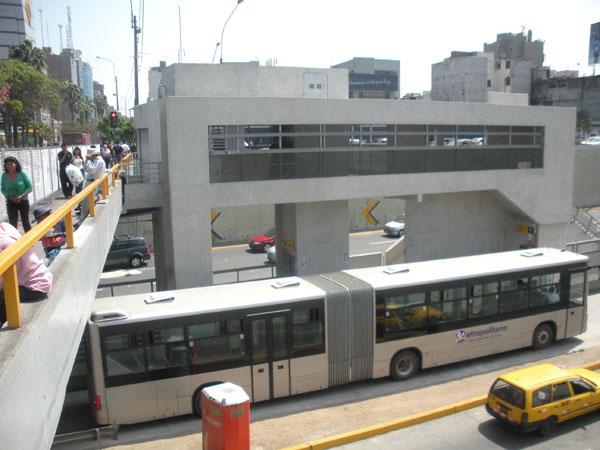
Other hopeful signs were displayed on a series of posters along the esplanade beside the Palacio del Gobierno announcing dozens of regeneration and development projects such as swimming pool parks, pedestrian walkways and road expansions that promised to improve the lives of Limeños throughout the city.
After years of mismanagement and ineffective government, Limeños have learned to make their city work for them. While this rather chaotic, ungoverned approach has worked for some, it has failed to work for many others.
We hope that the government will maintain the momentum for regeneration and development that will lead to a future Lima with more equality and a higher level of public services for all.
Click here to return to our Central and South America - Spring 2010 page
![]()